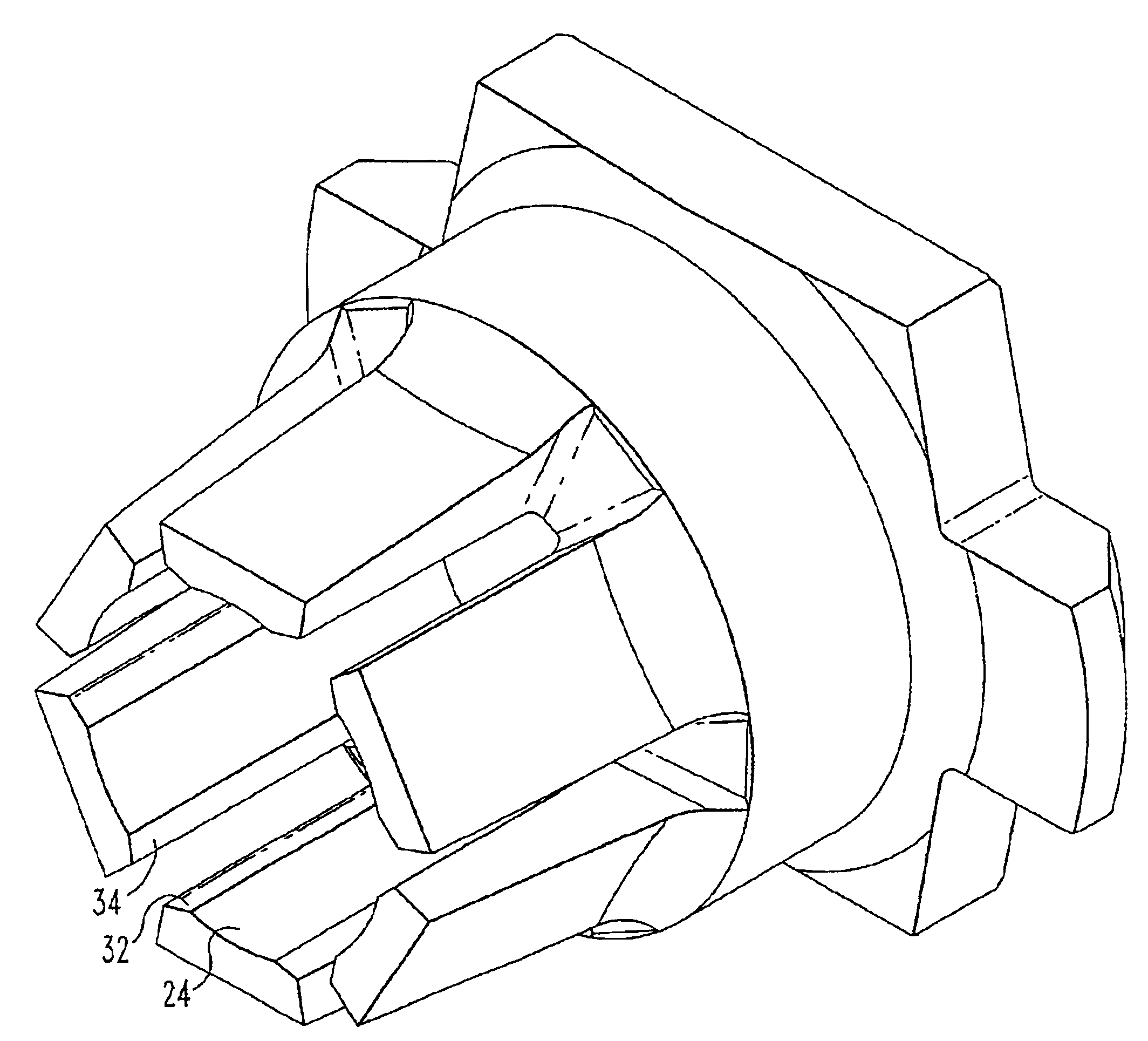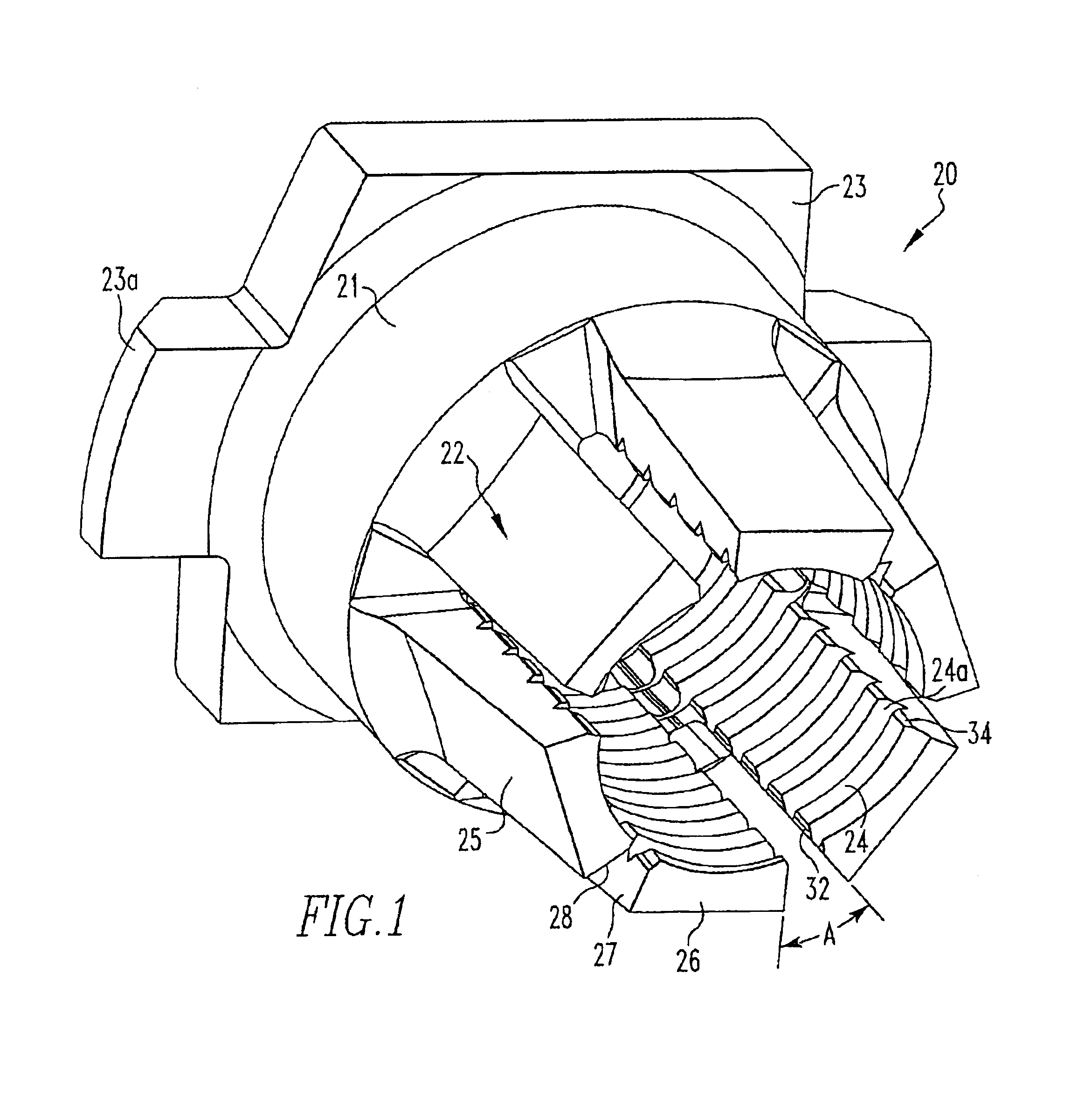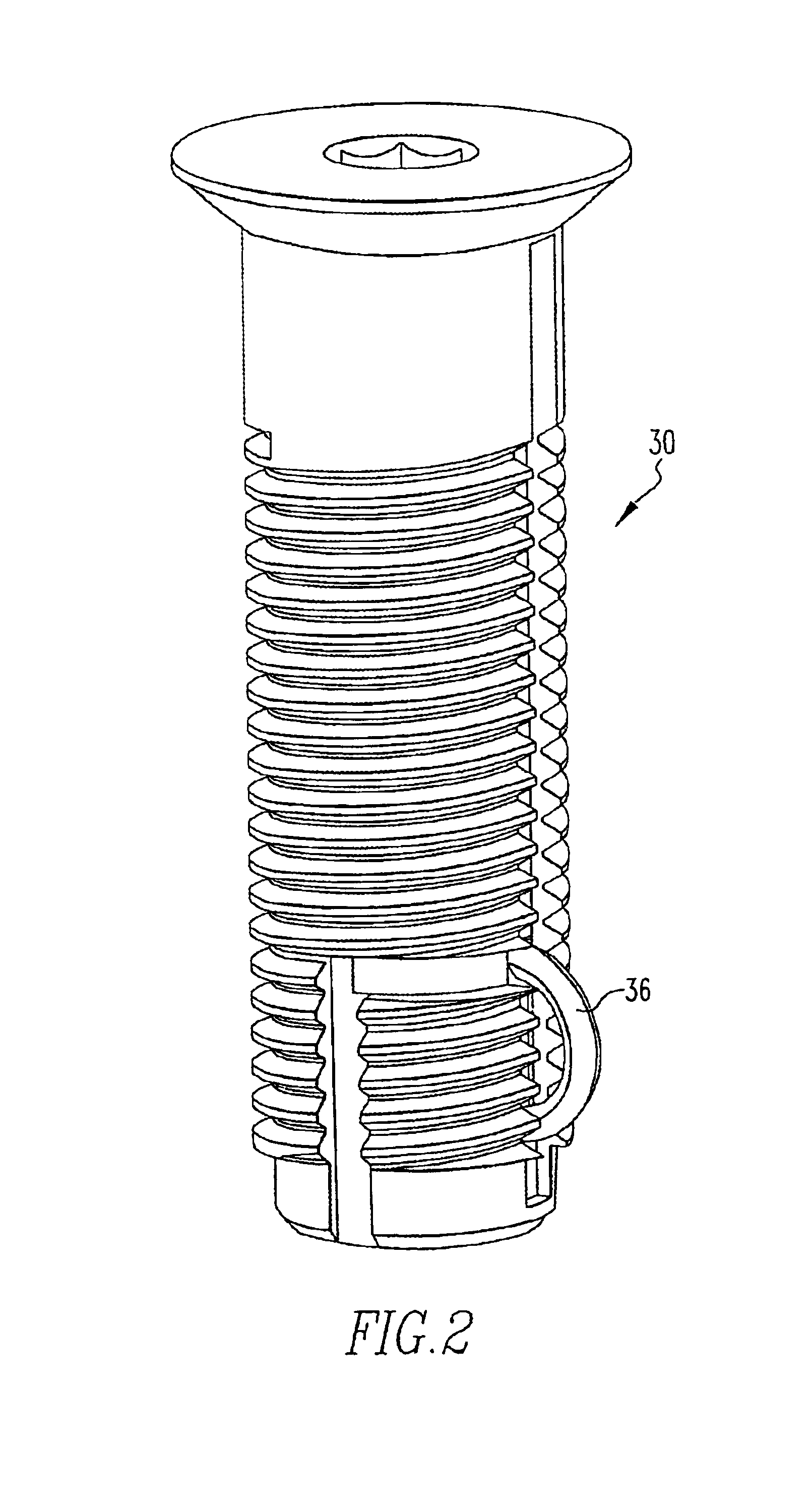Lock nut member
a technology of locking nuts and nuts, which is applied in the direction of screws, threaded fasteners, bolts, etc., can solve the problems of burrs forming in the internal threads of the locking nuts, and achieve the effects of reducing manufacturing fabrication costs, improving the performance and quality of the locking nuts, and avoiding rapid deterioration of the prevailing torqu
- Summary
- Abstract
- Description
- Claims
- Application Information
AI Technical Summary
Benefits of technology
Problems solved by technology
Method used
Image
Examples
Embodiment Construction
[0018]The present invention is an improvement in the construction and operation of known locking beam nuts or lock nuts and, in particular, of the lock nut shown and described in U.S. Pat. No. 5,088,868. Lock nuts of this kind are generally of a one-piece construction. As shown in FIG. 1, each lock nut 20 has a non-deflectable or rigid body portion 21 and a plurality of locking segments or beams 22. Each beam is formed integrally with the body portion 21 and extends axially therefrom. The body portion 21 has an internal axial opening extending completely through it. The opening is threaded so as to receive the, external threads of a bolt or like part or fastener. The body portion 21 may also have a plurality of flat wrenching surfaces (not shown) along its external surface. Lock nut 20 also includes a flange 23 adjacent the body portion 21 opposite from beams 22. Flange 23 may have a plurality of positioners 23a which are used for alignment purposes in a cassette or the like.
[0019]T...
PUM
 Login to View More
Login to View More Abstract
Description
Claims
Application Information
 Login to View More
Login to View More - R&D
- Intellectual Property
- Life Sciences
- Materials
- Tech Scout
- Unparalleled Data Quality
- Higher Quality Content
- 60% Fewer Hallucinations
Browse by: Latest US Patents, China's latest patents, Technical Efficacy Thesaurus, Application Domain, Technology Topic, Popular Technical Reports.
© 2025 PatSnap. All rights reserved.Legal|Privacy policy|Modern Slavery Act Transparency Statement|Sitemap|About US| Contact US: help@patsnap.com



